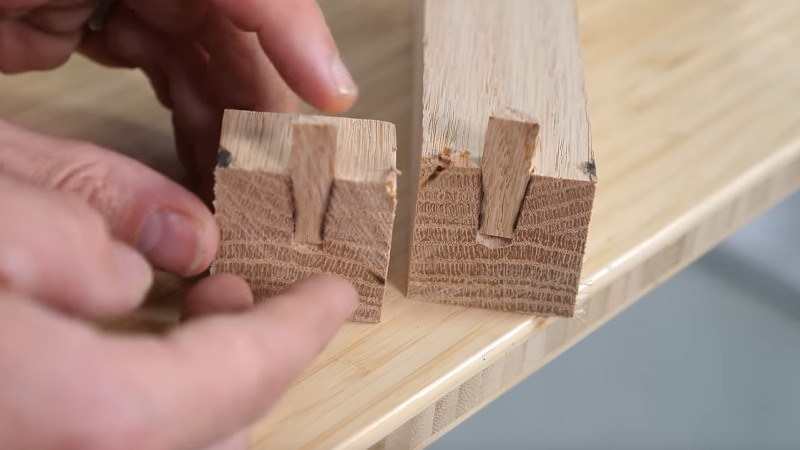Can you weld wood? It seems like a silly question — if you throw a couple of pieces of oak on the welding table and whip out the TIG torch, you know nothing is going to happen. But as [Action Lab] shows us in the video below, welding wood is technically possible, if not very practical.
Since experiments like this sometimes try to stretch things a bit, it probably pays to define welding as a process that melts two materials at their interface and fuses them together as the molten material solidifies. That would seem to pose a problem for wood, which just burns when heated. But as [Action Lab] points out, it’s the volatile gases released from wood as it is heated that actually burn, and the natural polymers that are decomposed by the heat to release these gases have a glass transition temperature just like any other polymer. You just have to heat wood enough to reach that temperature without actually bursting the wood into flames.
His answer is one of the oldest technologies we have: rubbing two sticks together. By chucking a hardwood peg into a hand drill and spinning it into a slightly undersized hole in a stick of oak, he created enough heat and pressure to partially melt the polymers at the interface. When allowed to cool, the polymers fuse together, and voila! Welded wood. Cutting his welded wood along the joint reveals a thin layer of material that obviously underwent a phase change, so he dug into this phenomenon a bit and discovered research into melting and welding wood, which concludes that the melted material is primarily lignin, a phenolic biopolymer found in the cell walls of wood.
[Action Lab] follows up with an experiment where he heats bent wood in a vacuum chamber with a laser to lock the bend in place. The experiment was somewhat less convincing but got us thinking about other ways to exclude oxygen from the “weld pool,” such as flooding the area with argon. That’s exactly what’s done in TIG welding, after all.















This also reminds me of making pellets from sawdust under high pressure. But I never looked into details of whether this should be called “welding” or if it’s more like “glueing” wood with it’s own lignin.
The term is sintering
Everybody knows you can’t TIG wood, you have to use TWIG.
This is the dad joke I came here for
It reminds me of the Phineas and Ferb episode where they went 20 years into the future to get a wood welder. Considering when that episode was made, we might be on schedule.
B^)
“high holding force due to wood welding effect” https://www.beck-fastening.com/en/innovation/lignoloc Not technically welding as we tend to think of it (more of a friction activated glue technology) but it’s pretty close.
Think about how glue works – it’s an adhesive that forms an intermolecular bond between the two surfaces to be joined. This is markedly different than welding or even soldering, where the material to join the two surfaces penetrates into the base material. With welding, the joint uses materials very similar or identical to the base material, so the joint is practically as strong.
This is a ton closer to welding than soldering or gluing, especially if it’s done with the grain (so the fibers in the two pieces are aligned): the material joining the two is the same as what’s holding the base material together.
Could you heat the lignin with microwaves?
Won’t watch the video soooo
But. Cramming an overrsized wood peg into an undersized hole isn’t exactly new. It just needs a big hammer and a chamfer on the peg. Maybe just maybe it excretes some kind of resin under heat with the rotation. But the re-expansion of the cellulose structure and friction thereof is the important bit. See: every wood shop ever built with treenails. Since forever until metal hulls took over.
“But the re-expansion of the cellulose structure and friction thereof is the important bit.”
It’s not. That’s not what’s going on. The peg example is just an easy way to demonstrate it.
The discovery actually happened by accident when a plastic-welding technique (where you join two pieces of wood with plastic in the middle) was run without the plastic. The original paper is “Wood bonding by vibrational welding,” by Gfeller, Zanetti et al. They called it “wood fusion” because the original technique (using a plastic binder) was originally called wood welding.
They’ve taken SEM pictures of the structure, and clearly established that the joining of the two pieces of wood isn’t frictional or physical, there’s a total restructuring of the matrix.
Wood ship
He really needs someone better to do his videos. The content is good but man he’s a terrible narrator/presenter. Annoying voice and very straight stoic speaking style. It’s annoying.